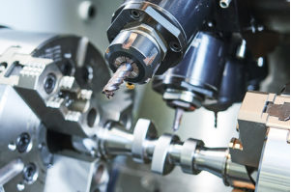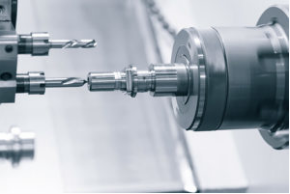Hotest Articles
Injection molding is one of the most commonly used production processes for plastics. This is rightly so as it offers a viable solution for the mass production of high-quality injection automotive parts from a broad range of polymers. In the automotive industry, where consistency, safety, and quality are of utmost importance, automotive plastic injection molding is an important manufacturing process.
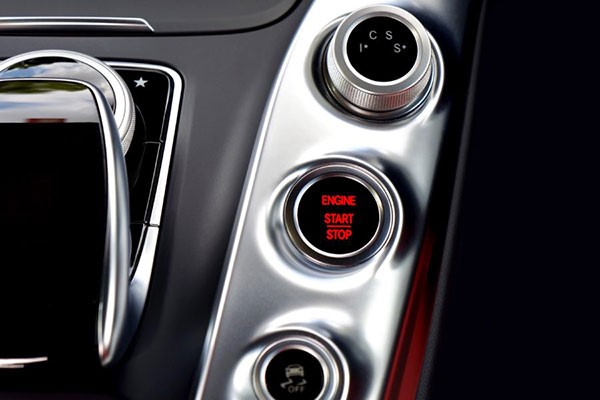
This article will be discussing automotive plastic injection molding from various aspects, including its history, advantages, applications, alternative solutions, and materials. Swipe down and read on!
Table of Contents
I Automotive Plastic Injection Molding: The History
II Advantages of Injection Molding for Automotive Applications
III Production Applications for Automotive Injection Molding
IV Alternatives to Injection Molding for Low-cost Automotive Prototypes
V Injection Molding Materials for Automotive Parts
VI RapidDirect Automotive Plastic Injection Molding Services
Automotive Plastic Injection Molding: The History
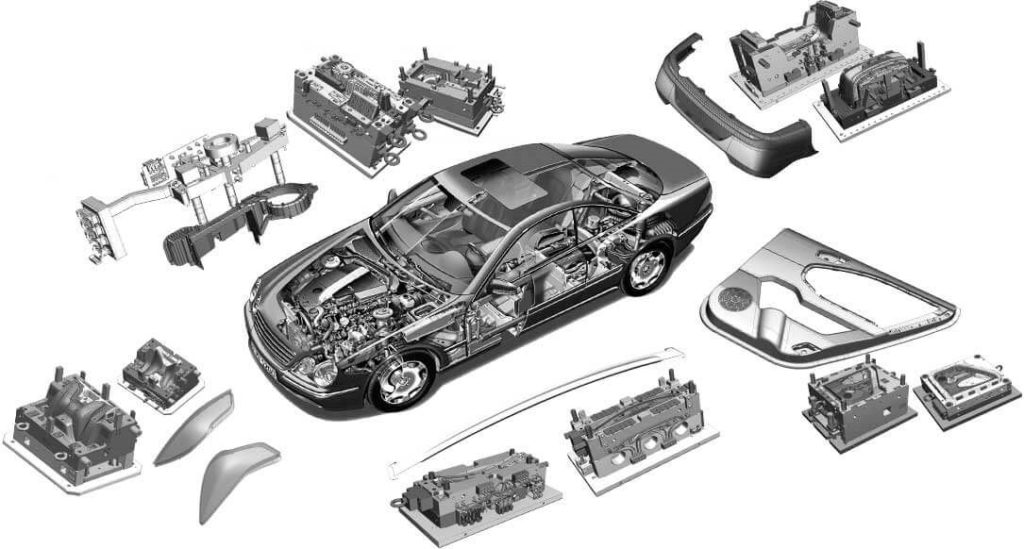
In the early days of the automotive industry, cars were made almost entirely of metal, which meant they were clunky and extremely heavy. However, the industry became advanced and the plastics market erupted in the 1940s and 50s. Therefore, automotive manufacturers began to experiment with plastic car parts in their production.
In the 1970s, manufacturers rolled out the first cars with plastic decorative elements. Later in the 80s, they also introduced more functional parts like plastic headlights, bumpers, and fenders.
In the early 2000s, automotive manufacturers unveiled the first plastic structural components for cars, which had the advantage of being more lightweight than their metal counterparts, unlocking improved fuel efficiency and cheaper production. Today, injection molding is now a dominant production method for manufacturing plastic car parts in the automotive industry.
Advantages of Injection Molding for Automotive Applications
Injection molding is an established production process in which automotive mold manufacturers inject molten plastic materials into a mold cavity. The melted plastic then cools and hardens, and the manufacturers extract the finished part. Though the mold design process is critical and challenging (a poorly designed mold can result in defects), injection molding itself is a reliable method for producing solid plastic parts with a high-quality finish.
Here are a few reasons why the process is beneficial for automotive plastic parts production:
1. Repeatability
In the automotive industry, repeatability—or the ability to consistently produce identical parts—is crucial. Because automotive plastic injection molding typically relies on robust metal molds, the final molded automotive parts produced using the mold are practically identical. Some factors come into play with injection molding, but injection molding is a highly repeatable process if the mold has a good design and finishing.
2. Scale and Cost
The injection mold-making process can be an expensive process due to the cost of the mold. However, it remains a highly scalable process whose overall cost decreases as the manufacturer makes more parts. For mass production applications, injection molding is thus beneficial to the manufacturer. For anything less than mass production, however, injection molding tooling costs may curb the cost efficiency of the process.
3. Material Availability
A significant benefit of using injection molding for automotive production is the wide range of rigid, flexible, and rubber plastics the process is compatible with. Manufacturers use a wide range of different polymers for various applications in the automotive industry, including ABS, polypropylene, acrylic, acetal, nylon, polycarbonate, and more.
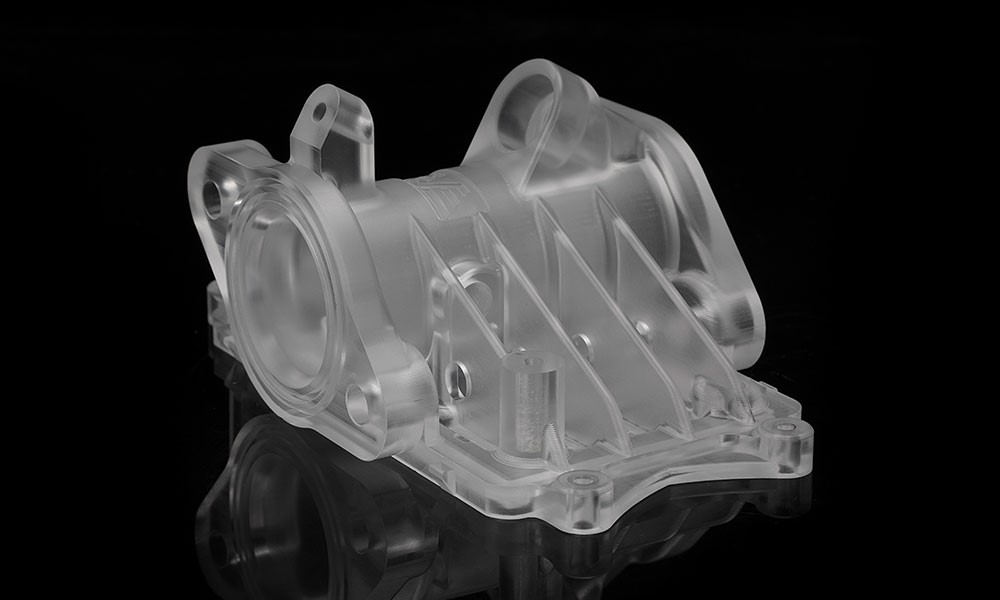
4. High Precision and Surface Finish
Injection molding is ideal for producing plastic parts with relatively simple geometries and results in high surface finish quality. Manufacturers have many finish options when producing parts, including various surface textures—such as glossy, rough, or matte—which they apply directly to the mold rather than the molded part. However, different plastic materials also influence the final surface finish.
5. Color Options
In automotive plastic injection molding, it is easy to modify the colors of molded automotive parts to fit the vehicle’s color scheme. Unlike other processes, injection molding allows you to mix dyes with the raw material pellets before manufacturing begins. This produces solid, consistent coloration without the need for painting or tinting after the molding is complete.
6. Fast Prototypes with Rapid Tooling
Although automotive manufacturers widely use injection molding for mass production of auto parts, they also use it as a prototyping tool. By creating fast, low-cost aluminum molds with rapid tooling — usually by additive manufacturing or CNC machining — automotive mold manufacturers can turn around short runs of prototype molded car components much faster than traditional (steel) tooling.
Production Applications for Automotive Injection Molding
In the automotive sector, injection molding is one of the predominant methods manufacturers use to form plastic parts. However, it would be difficult to make a list of plastic components in a car produced using injection molding, so we’ll look at some of the main ones.
1. Components under-the-hood
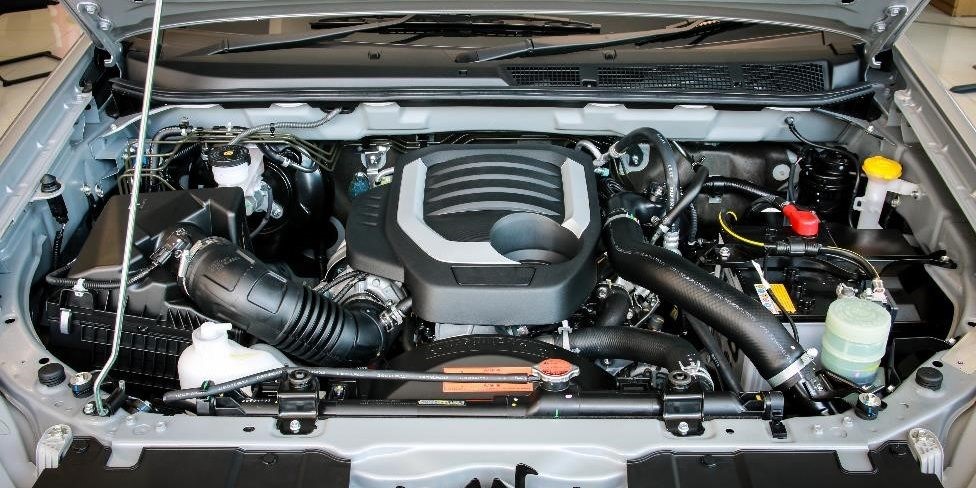
For the past two decades or so, many under-the-hood components that manufacturers formerly made from metal have been transitioned to plastic. For these applications, robust polymers such as ABS, Nylon, and PET are common. However, manufacturers now make parts such as cylinder head covers and oil pans using injection molding. This method offers lower weights and costs compared to metal parts.
2. Exterior Components
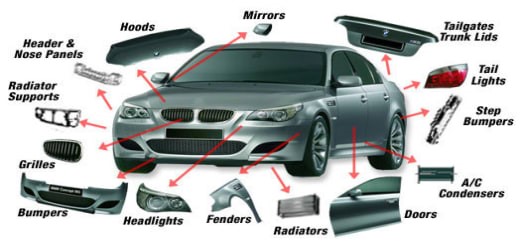
Injection molding is an established process for many exterior automotive components, including fenders, grilles, bumpers, door panels, floor rails, light housings, and more. Splash guards are a fine example for demonstrating the durability of injection molded parts. In addition, the components, which protect the car from road debris and minimize splashing, are often made from rubber or other durable and flexible materials.
3. Interior Components
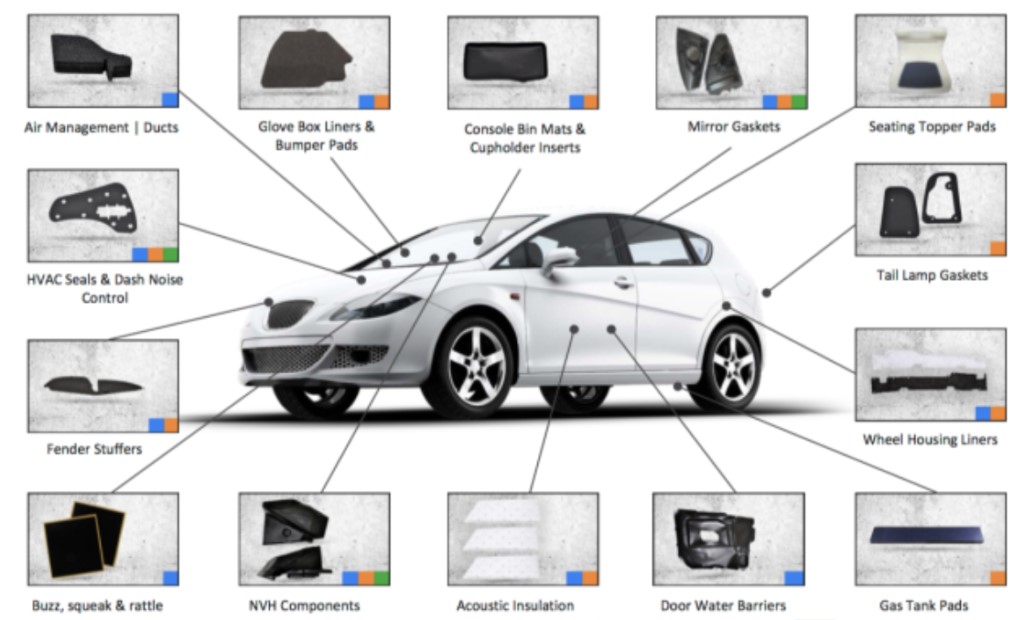
Manufacturers also produce many automotive interior parts using automotive plastic injection molding. They include instrumentation components, interior surfaces, dashboard faceplates, door handles, glove compartments, air vents, and more. In addition, they also use injection molding for producing decorative plastic elements.
Alternatives to Injection Molding for Low-cost Automotive Prototypes
In many cases, molded plastics serve as an alternative to metals. Formerly, manufacturers make items like brackets, trunk lids, seatbelt modules, and air-bag containers exclusively from metal. Nowadays, injection molding is the preferred production method for these plastics.
On the other hand, manufacturers can sometimes replace molded plastic parts with 3D-printed plastic car parts. This happens especially in prototyping, where there is less need for extreme durability or a smooth surface finish. Many moldable plastics can serve as FDM 3D printer filaments or as SLS 3D printer powders for nylons. Some specialist and high-temp 3D printers can also print reinforced composites for high-strength parts.
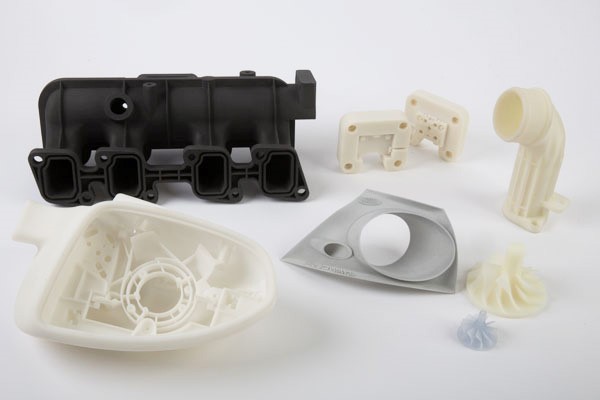
For one-off prototypes, especially non-mechanical parts, 3D printing may offer a cost-effective alternative to molding. Due to the absence of tooling costs, production prices are not as high.
In some cases, manufacturers may even use 3D printing for a handful of end-use automotive parts. They may use SLM 3D printing to make fluid handling components like valves (not usually injection molded). However, another option is using SLS 3D printing to make parts like bumpers, trim, and windbreakers, which are sometimes injection molded.
Manufacturers may use additive manufacturing for a much wider range of injection auto parts in the not-too-distant future. This may range from doors and body panels (SLM) to powertrain and drivetrain parts (EBM).
Injection Molding Materials for Automotive Parts
Automotive producers need to build their vehicles to rigorous safety standards and meet several certifications to become roadworthy. As such, it is important to choose the right plastic for any plastic injection molding automotive parts.
The following is a non-exhaustive list of common automotive IM plastics, along with the parts they serve as raw materials for:
1. Acrylonitrile butadiene styrene (ABS)
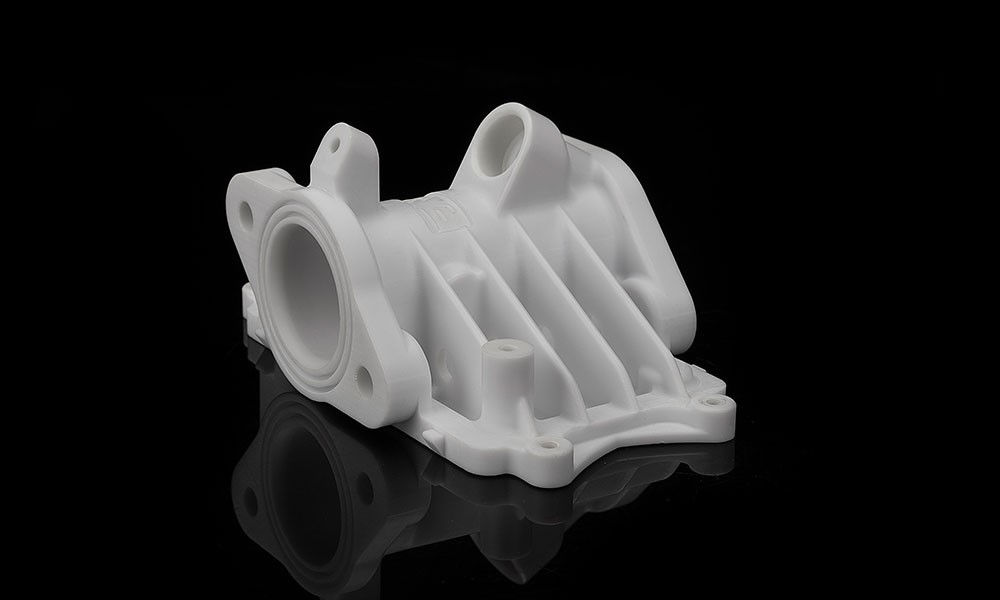
Widely used for injection molding and 3D printing, the durable plastic ABS is fairly weather-resistant. In cars, it may be used to make items like dashboards and covers.
2. Polyamide (PA)/ Nylon
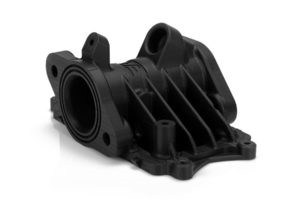
Although not resistant to liquids, nylons have good abrasion and chemical resistance. They can be molded into automotive components like bushes and bearings.
3. Poly(methyl methacrylate) (PMMA)
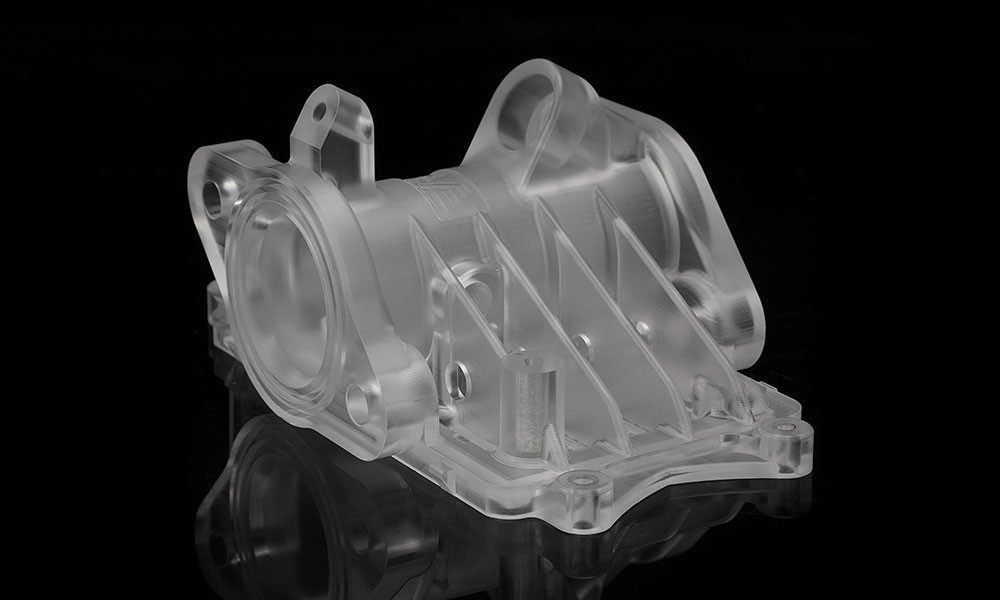
The transparency of acrylic makes it an excellent (and shatterproof) substitute for glass. An automotive plastic parts manufacturer may use molded PMMA for headlight covers and internal screens (e.g., SatNav or radio).
4. Polypropylene (PP)
Automotive part manufacturers use PP for some of the more high-intensity automotive parts, including several exterior components. This is due to its resistance to water, chemicals, and UV light. PP parts include bumpers, cable insulation, and battery cover.
5. Polyurethane (PU)
PU is often found in spongy and flexible items like foam seating. This includes car seating, but auto applications of PU also include seals and gaskets, insulation panels, and suspension bushings.
6. Polyvinyl chloride (PVC)
PVC is the third most popular synthetic plastic polymer globally, and within the auto industry, it is used for many molded parts that require good chemical resistance. These include interior panels, dashboards, and cable insulation.
7. Reinforced composites
Manufacturers can use glass or carbon fiber reinforced plastics, much stronger than ordinary resins used in the production of car bodywork and bumpers.
GUAN SHENG Automotive Plastic Injection Molding Services
At GUAN SHENG, we offer professional injection molding services, delivering mass-produced plastic car parts to clients in the automotive and other industries. Our services include thermoplastic injection molding, over-molding, insert molding, and mold making. In the latter case, our experts work with clients to produce high-quality molds for prototyping or large production runs.
We also work with a wide range of plastic injection materials, including strong, heat resistant, and rigid thermoplastics; flexible, fast curing thermoplastics; and durable, high-temperature rubber plastics. Our professional automotive plastic injection molding services enable our automotive clients to obtain high-quality molded automotive parts that meet their application requirements.
Get an Injection Molding Quote
FAQ
What is the best material for injection molding automotive parts?
Different parts demand different plastic materials, but the most widely used plastics are PP (seating, body, under the hood); PU (seating, upholstery); and PVC (seating, interior trim, electrical, upholstery). RapidDirect can advise you on a suitable material for your automotive parts.
Should I use injection molding for automotive prototypes?
It probably depends on your required quantity. Manufacturers can make rapid tooling for a low-cost run of molded parts for a hundred parts or so. But for just one or two units of a prototype, it might make more sense to use a specialist prototyping technology like additive manufacturing, where there are fewer up-front costs.
What about metal parts?
Injection molding is not compatible with metals, and the nearest alternative may be the process of metal casting, which manufacturers use to produce aluminum transmission housings and pistons, as well as engine blocks and cylinder heads. CNC machining is another popular production process in the automotive industry.

